Top 10 Largest Churches in Europe
 |
| Top 10 largest churches in the world |
| Table of Content |
Seventy two percent of Europeans were Christians as of the year 2012. This makes Christianity the most subscribed to religion in the European continent. This fact is emphasized by presence of numerous churches throughout the continent. Other religions present in the continent of Europe are Islam, Judaism and atheism. Christianity is however subdivided into various denominations, with the major subdivisions being Catholicism and Protestantism, best represented by St. Peter’s Basilica Church and Church of Sweden respectively. Other denominations are Orthodox, Anglicanism and Calvinism examples of churches being Serbian Orthodox Church, Church of England and United Reformed Church respectively. There are other smaller denominations referred to as Baptist and Adventists, and so are some evangelical congregations that are thought to be of protestant affiliation. In Europe, churches are not only places of worship but also tourist attraction sites due to their fascinating craftsmanship and architectural designs.
Churches are immense buildings, usually from a distant past. They are decorated with pomp and circumstance. There is peace. They rise high above the other buildings and are located in the heart of the city. Many Christians, but also tourists, go there every year. These are of course churches. This is the top 10 Largest Churches in Europe.
The List of top 10 largest churches in Europe
10. Florence Cathedral (Italy)
9. El Pilar Cathedral (Zaragoza, Spain)
8. Basilica of Saint Paul Outside the Walls (Rome, Italy)
7. Basilica of the Holy Trinity (Fátima, Portugal)
6. Liverpool Cathedral (United Kingdom)
5. St. Mary’s Basilica of Licheń (Licheń Stary, Poland)
4. Abbey of Santa Giustina (Padua, Italy)
3. Milan Cathedral (Italy)
2. Seville Cathedral (Spain)
1. St. Peter’s Basilica (Vatican City)
What are the top 10 largest churches in Europe?
10. Florence Cathedral (Italy)
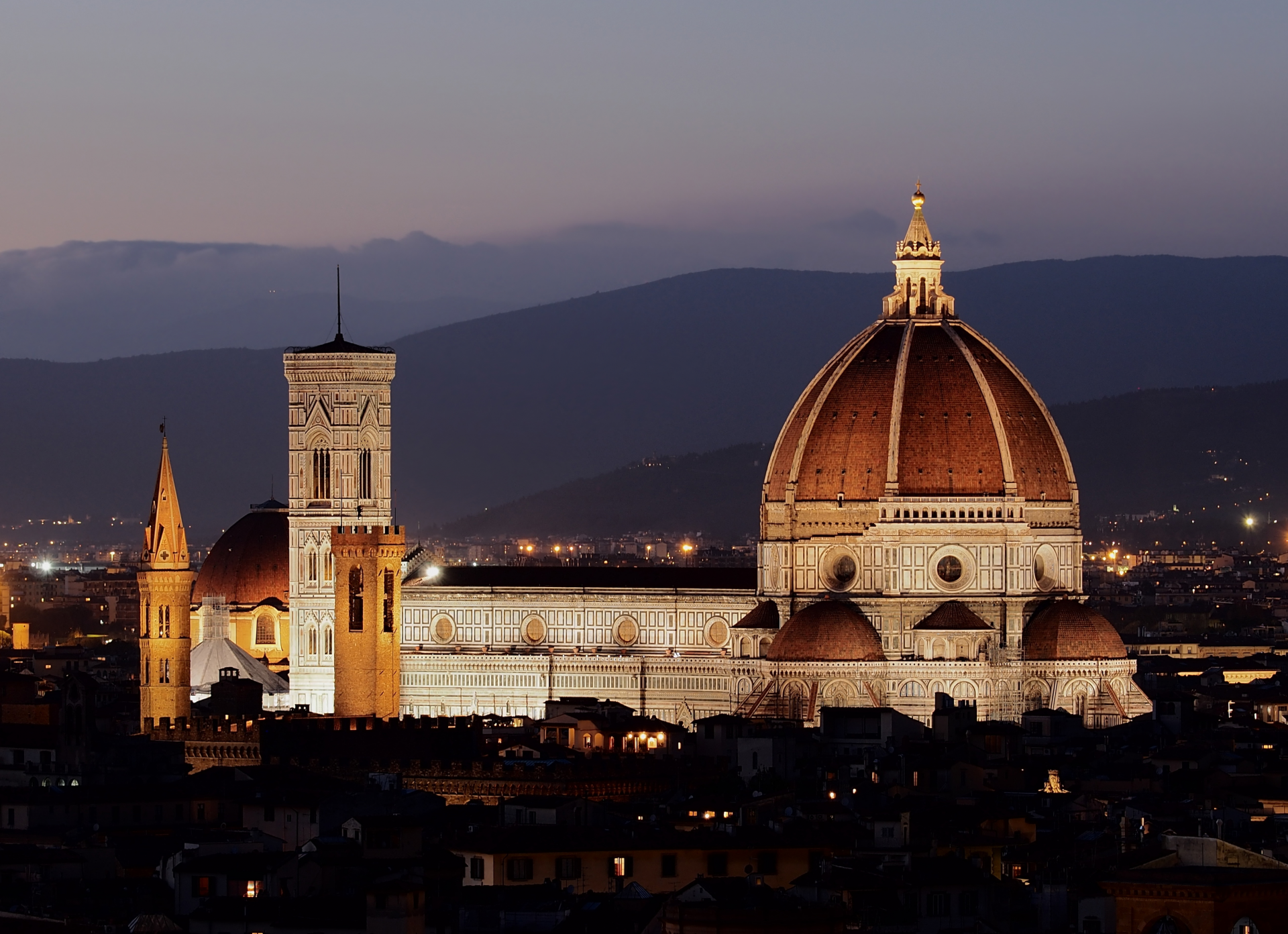 |
| Photo: Wikipedia |
Florence Cathedral, formally the Cattedrale di Santa Maria del Fiore; in English Cathedral of Saint Mary of the Flower), is the cathedral of Florence, Italy (Italian: Duomo di Firenze). It was begun in 1296 in the Gothic style to a design of Arnolfo di Cambio and was structurally completed by 1436, with the dome engineered by Filippo Brunelleschi. The exterior of the basilica is faced with polychrome marble panels in various shades of green and pink, bordered by white, and has an elaborate 19th-century Gothic Revival façade by Emilio De Fabris.
The cathedral complex, in Piazza del Duomo, includes the Baptistery and Giotto's Campanile. These three buildings are part of the UNESCO World Heritage Site covering the historic centre of Florence and are a major tourist attraction of Tuscany. The basilica is one of Italy's largest churches, and until the development of new structural materials in the modern era, the dome was the largest in the world. It remains the largest brick dome ever constructed.
The cathedral is the mother church of the Roman Catholic Archdiocese of Florence, whose archbishop is Giuseppe Betori.
9. El Pilar Cathedral (Zaragoza, Spain)
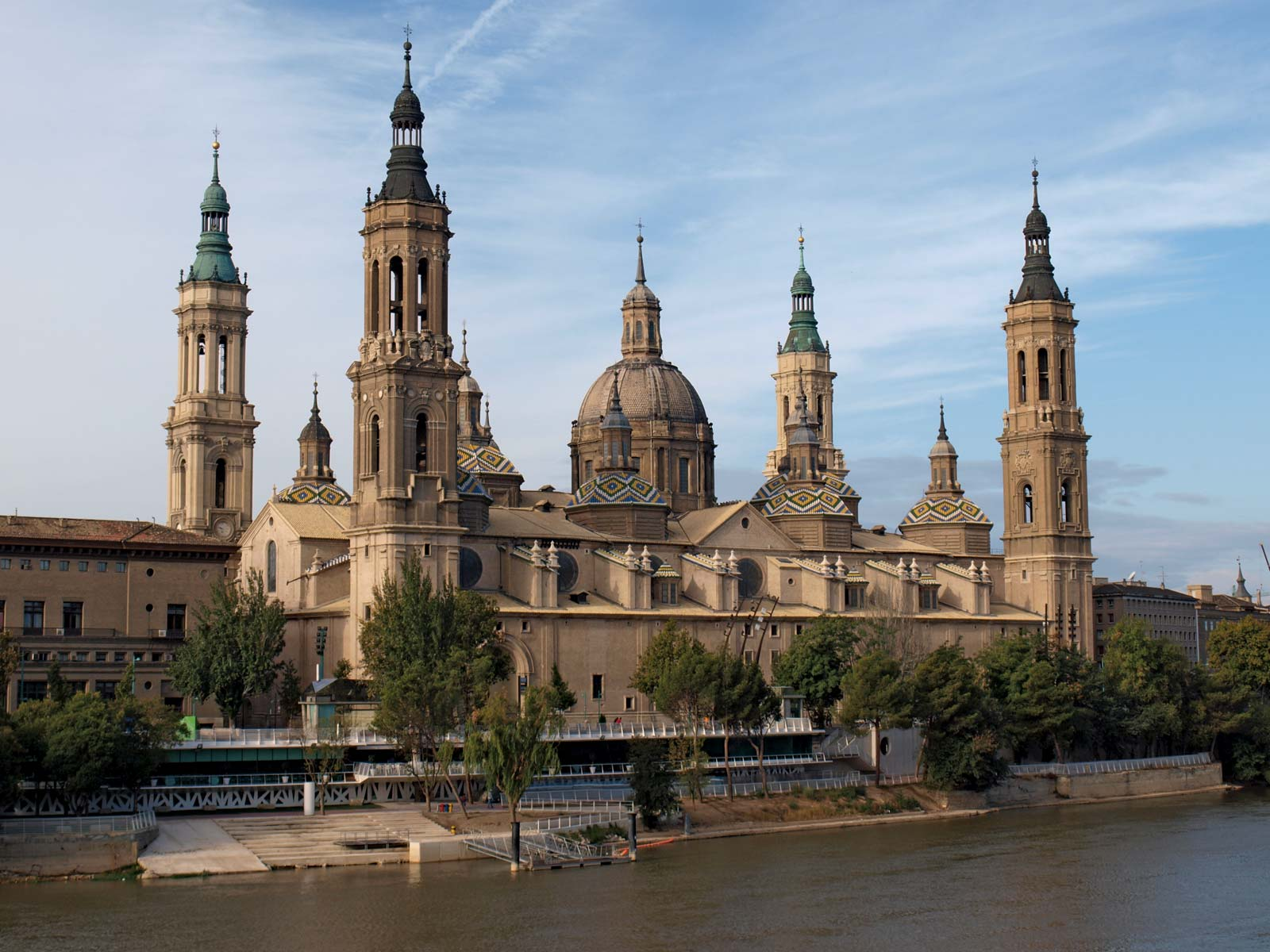 |
| Photo: Wikipedia |
Our Lady of the Pillar (Spanish: Nuestra Señora del Pilar) is the name given to the Blessed Virgin Mary in the context of the traditional belief that Mary, while living in Jerusalem, supernaturally appeared to the Apostle James the Greater in AD 40 while he was preaching in what is now Spain. Those who adhere to this belief consider this appearance to be the only recorded instance of Mary exhibiting the mystical phenomenon of bilocation. Among Catholics, it is also considered the first Marian apparition, and unique because it happened while Mary was still living on Earth.
This title is also associated with a wooden image commemorating the apparition, which is now enshrined at the Cathedral-Basilica of Our Lady of the Pillar in Zaragoza, Aragon, Spain. Pope Callixtus III granted indulgences for visitors to the shrine in 1456. Pope Innocent XIII in 1730 mandated her veneration throughout the Spanish Empire. On 20 May 1905, Pope Pius X granted the image a canonical coronation.
Our Lady of the Pillar is considered the Patroness of Aragon and its capital Zaragoza, and of the Spanish Civil Guard. Her feast day is 12 October, which coincides with Columbus Day, the national holiday of Spain.
8. Basilica of Saint Paul Outside the Walls (Rome, Italy)
 |
| Photo: Getty Images |
The Papal Basilica of Saint Paul Outside the Walls (Italian: Basilica Papale di San Paolo fuori le Mura), commonly known as Saint Paul's Outside the Walls, is one of Rome's four ancient, papal, major basilicas, along with the basilicas of Saint John in the Lateran, Saint Peter's, and Saint Mary Major.
The Basilica is within Italian territory, but the Holy See owns the Basilica in a regime of extraterritoriality, with Italy recognizing its full ownership and conceding it "the immunity granted by international law to the headquarters of the diplomatic agents of foreign States".
James Michael Harvey was named Archpriest of the basilica in 2012.
On 6 December 2006, it was announced that Vatican archaeologists had confirmed the presence of a white marble sarcophagus beneath the altar, perhaps containing the remains of the Apostle. A press conference held on 11 December 2006 gave more details of the work of excavation, which lasted from 2002 to 22 September 2006, and which had been initiated after pilgrims to the basilica expressed disappointment that the Apostle's tomb could not be visited or touched during the Jubilee year of 2000. The sarcophagus was not extracted from its position, so that only one of its two longer sides is visible. In 2009 the Pope announced that radiocarbon dating confirmed that the bones in the tomb date from the 1st or 2nd century suggesting that they are indeed Paul's.
A curved line of bricks indicating the outline of the apse of the Constantinian basilica was discovered immediately to the west of the sarcophagus, showing that the original basilica had its entrance to the east, like Saint Peter's Basilica in the Vatican. The larger 386 basilica that replaced it had the Via Ostiense (the road to Ostia) to the east and so was extended westward, towards the river Tiber, changing the orientation diametrically.
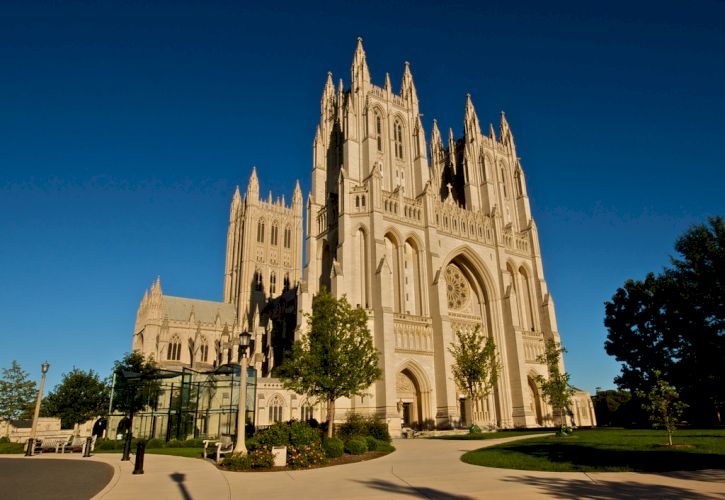 Top 15 Most Beautiful Churches In The US Top 15 Most Beautiful Churches In The US The churches can provide a glimpse into the past while offering some of the most spectacular architecture and overall structural beauty. Here is the list ... |
7. Basilica of the Holy Trinity (Fátima, Portugal)
 |
| CREDIT OF IMAGE : H005 ON WIKIMEDIA COMMONS |
The Basilica of the Holy Trinity (Portuguese: Basílica da Santíssima Trindade) is a Roman Catholic church and minor basilica in the Sanctuary of Fátima (Marian Shrine of Our Lady of Fátima) in Cova da Iria, in the civil parish of Fátima, in the municipality of Ourém in Portugal.
In 2009 it received the Outstanding Structure Award by the International Association for Bridge and Structural Engineering. IABSE awards the most remarkable, innovative, creative or otherwise stimulating structure completed within the last few years.
During two years of construction, the Basilica of the Holy Trinity was designated GECA, for Grande Espaço Coberto para Assembleias (Great Covered Space for Assemblies), owing to its relative importance. Due to its importance, not just for the sanctuary, the church and the town, the architects' planners started a dialog with the local authority to study the best urban solution for its location. The area of Avenida D. José A. C. Silva was lowered in front the sanctuary, and a competition introduced into the urban area a pedestrian zone from Rua S. Vicente de Paulo and Avenida João XXIII, transforming this area into a boulevard, reducing transit and providing an artistic touch to the subterranean landscape. These change would result in the transformation of Fátima into a destination for pilgrims.
The basilica is situated on the axis of two great roads in Fátima: north-south, a courtyard and extension to the south with the Pastoral Centre until Avenida João XXIII and east-west, Avenida D. José A.C.Silva. The church is located in the southeast corner of the sanctuary of Fátima.
The plan of the building is marked by a gentle slope, permitting a good visibility of the altar from every angle. The interior is divided into two sectors, accomplished by a 2-metre (6.6 ft) partition: the first section has seating for 3,175 people (in addition to 58 spaces for handicapped); the second has 5,458 spaces (with 18 for handicapped). Meanwhile, the presbytery has a capacity for 100 celebrants.
The structure include several chapels: the Chapel of the Sacred Heart of Jesus (Portuguese: Capela do Sagrado Coração de Jesus), with 16 confessionals; the Chapel of the Immaculate Heart of Mary (Portuguese: Capela do Imaculado Coração de Maria), with 12 confessionals; the Chapel of the Resurrection of Jesus (Portuguese: Capela da Ressurreição de Jesus), with space for 200 and 16 confessionals; Chapel of the Death of Jesus (Portuguese: Capela da Morte de Jesus), with space for 600; and the Chapel of the Holy Sacrament (Portuguese: Capela do Santíssimo Sacramento), dedicated for Lausperene, a maximum of 200 continuous prayer venerates.
The simple modernist design is both functional and iconographic to express its religiosity. From the main portico, the Door of Christ brings attention to the transcendence of God. It represents the themes of Father, Son and Holy Spirit with iconic imagery.
6. Liverpool Cathedral (United Kingdom)
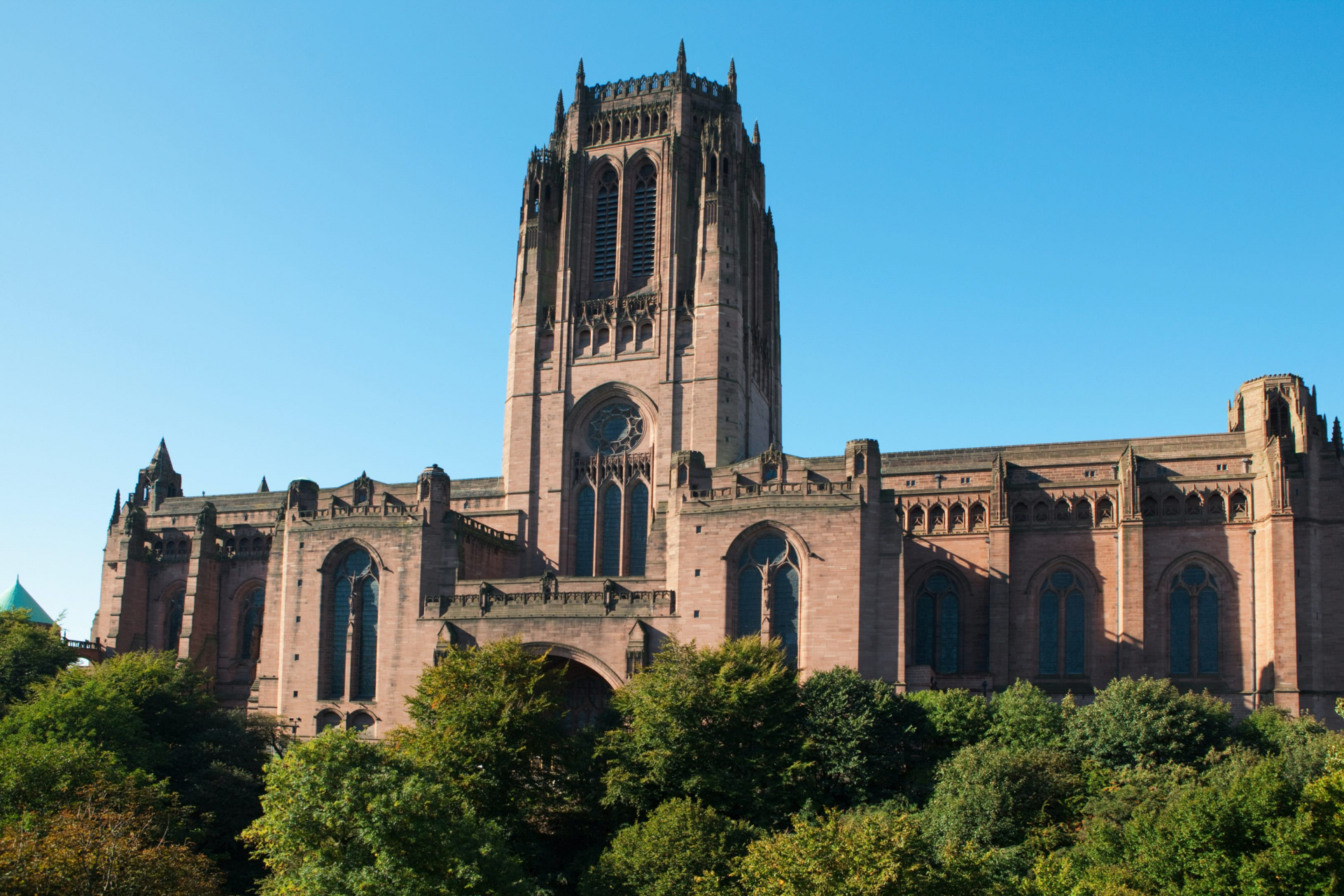 |
| Photo: Lonely Planet |
This Cathedral echoes the history of this great city since the turn of the 20th Century - a time of great challenge, of strife, of new beginnings, ever seeking to adapt and serve the city's spiritual needs.
Dean Rupert Hoare, installed in 1999, oversaw the introduction of the new Constitution and Statutes as required by the Cathedrals Measure 1999.
The Chapter was clear that charges to enter the Cathedral should not be introduced for visitors, and sought to make the building more accessible to a wide variety of worshippers, the Diocese of Liverpool, other organizations, visitors and tourists
The Cathedral's Centenary was celebrated in 2004, and the first two phases of the new Visitor Centre opened in December 2006 and early 2007. The final phase, which involved upgrading the existing restaurant area, was completed in early 2008.
The Cathedral today is not only pivotal to the spiritual and worship life of the city, but also ranks high in the North West tourist attraction tables. In 2009, against formidable competition, Liverpool Cathedral won the accolade of 'Best Large Visitor Attraction' at the North West's Annual Tourism Awards hosted by The Mersey Partnership.
5. St. Mary’s Basilica of Licheń (Licheń Stary, Poland)
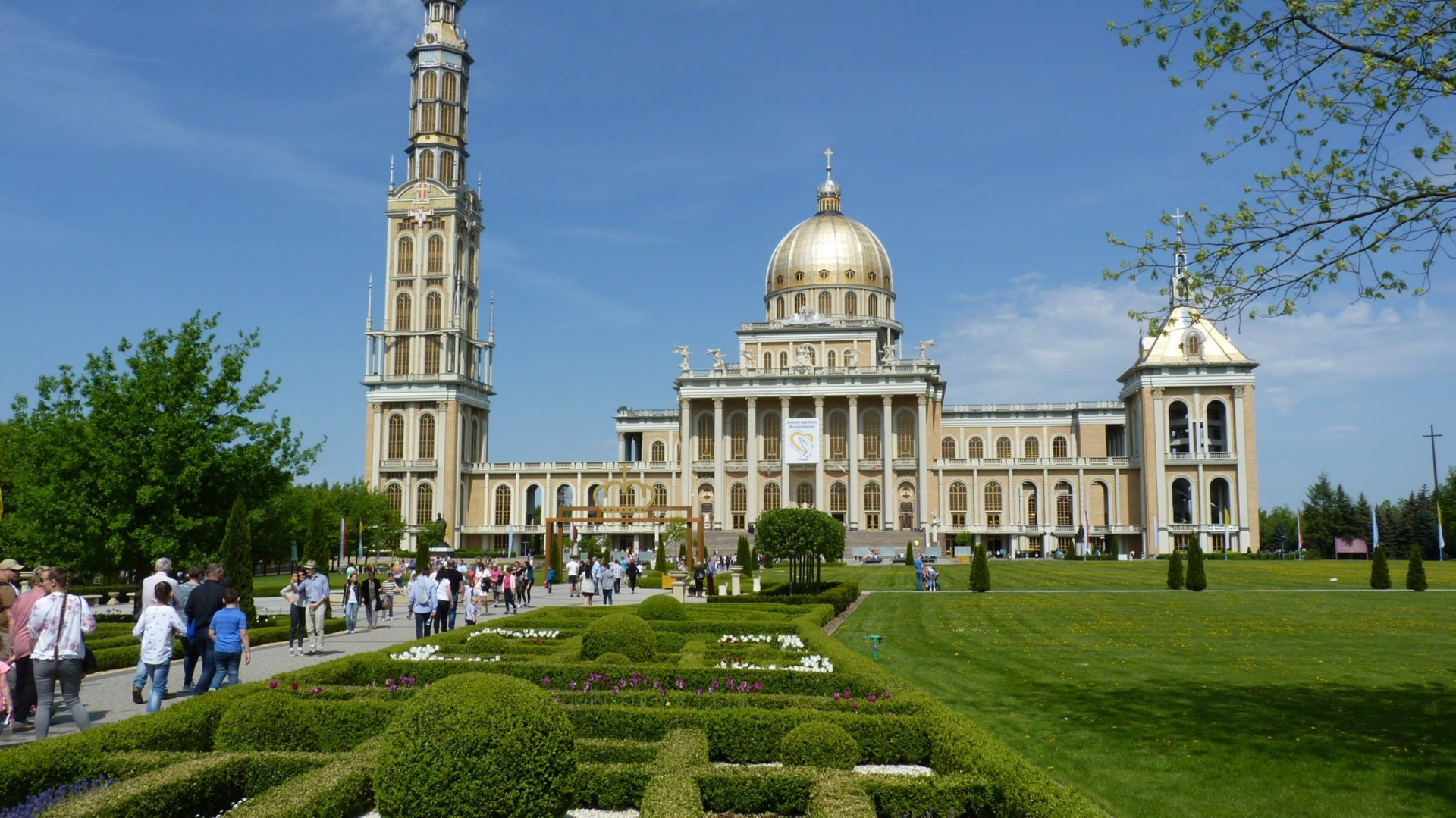 |
| Photo: Trip Advisor |
The Basilica of Our Lady of Licheń is a Roman Catholic church located in the village of Licheń Stary near Konin in the Greater Poland Voivodeship in Poland. It was designed by Barbara Bielecka and built between 1994 and 2004. The construction was funded by pilgrims' donations.
With the nave 120 meters long and 77 meters wide, with a central dome 98 meters high, and with a tower 141.5 metres tall, it is Poland's largest church and one of the largest churches in the World. The church is dedicated to Our Lady of Sorrows, Queen of Poland whose icon, perhaps dating back to the 18th century, is displayed in the basilica's main altar. It is one of Poland's principal pilgrimage sites. Pope John Paul II blessed the Basilica in 1999.
Basilica of Lichen is composed of three parts: two-storey shrine, belfry and tower. Towards the church leads 33 steps referring to years of earthly life of Jesus. There are 365 windows and 52 doors symbolizing number of days and weeks in the year. The vault of the Basilica is supported by 12 columns symbolising 12 Apostles. 4 columns supporting the dome symbolize the four Evangelists. There is placed a baldachin over the main altar. Here is the heart of the sanctuary - the tabernacle and above it, since 2006, the Miraculous Icon of Our Lady of Licheń. Higher there is a text of the oldest polish Marian song: The Mother of God.
There is also the largest organ in Poland. The instrument is composed of 5 independent sections, arranged in several places. To the right of the main nave, there is the Chapel of the Heart of Jesus, where in the wintertime pilgrims can adore the Blessed Sacrament and go to confession. To the left there is The Rosary Chapel with fresco depicting apparitions in Grąbliński Forrest.
4. Abbey of Santa Giustina (Padua, Italy)
 |
| Photo: Wikimedia Commons |
The Abbey of Santa Giustina is attached to the basilica which was built in the 520s AD by the Prefect Opilius to house the remains of St. Justina of Padua and of other Christian martyrs of the city. By the 10th century the community has been under the Rule of St. Benedict.
At that point the monastic community undertook renovations of the basilica. In 1110 the abbey was sacked by the troops of the future Holy Roman Emperor Henry V during his invasion of Lombardy, in order to punish the monks for their loyalty to Pope Pascal II. The basilica complex was devastated in 1117 by a very strong earthquake which wreaked havoc throughout northern Italy and Germany. After the basilica and monastery were rebuilt, excavations resumed and in 1174 the remains of the patroness of the abbey was discovered, as were those identified in 1177 as those of Luke the Evangelist.
A period of decline in the observance of its way of life began to develop in the monastic community. The abbey reached the height of its influence under the leadership of Ludovico Barbo. He was successful and the abbey became the nucleus of the Congregation of Santa Giustina, which spread to include monasteries throughout Europe who came under the guidance of the Abbot of Santa Giustina. The congregation later became called the Cassinese Congregation. The abbey developed ties with centers of learning across the continent.
The life of the abbey came to an end in 1797 when, along with all other religious communities, it was suppressed in the occupation of Italy by the French Revolutionary Army, led by Napoleon Bonaparte, which established the Cisalpine Republic in the city. Its artworks and the most valuable collections of the abbatial library were sent to Paris by the occupying forces. The monks were expelled and the buildings and property were sold off in 1810. The cloisters were then used as a military hospital, later as a barracks.
The buildings were returned to the Catholic Church in 1917 and Pope Benedict XV re-established the abbey with all its ancient rights and privileges. The basilica and abbey now have the government status of a national monument and operate under the authority of the Superintendent of Monuments and Civil Heritage.
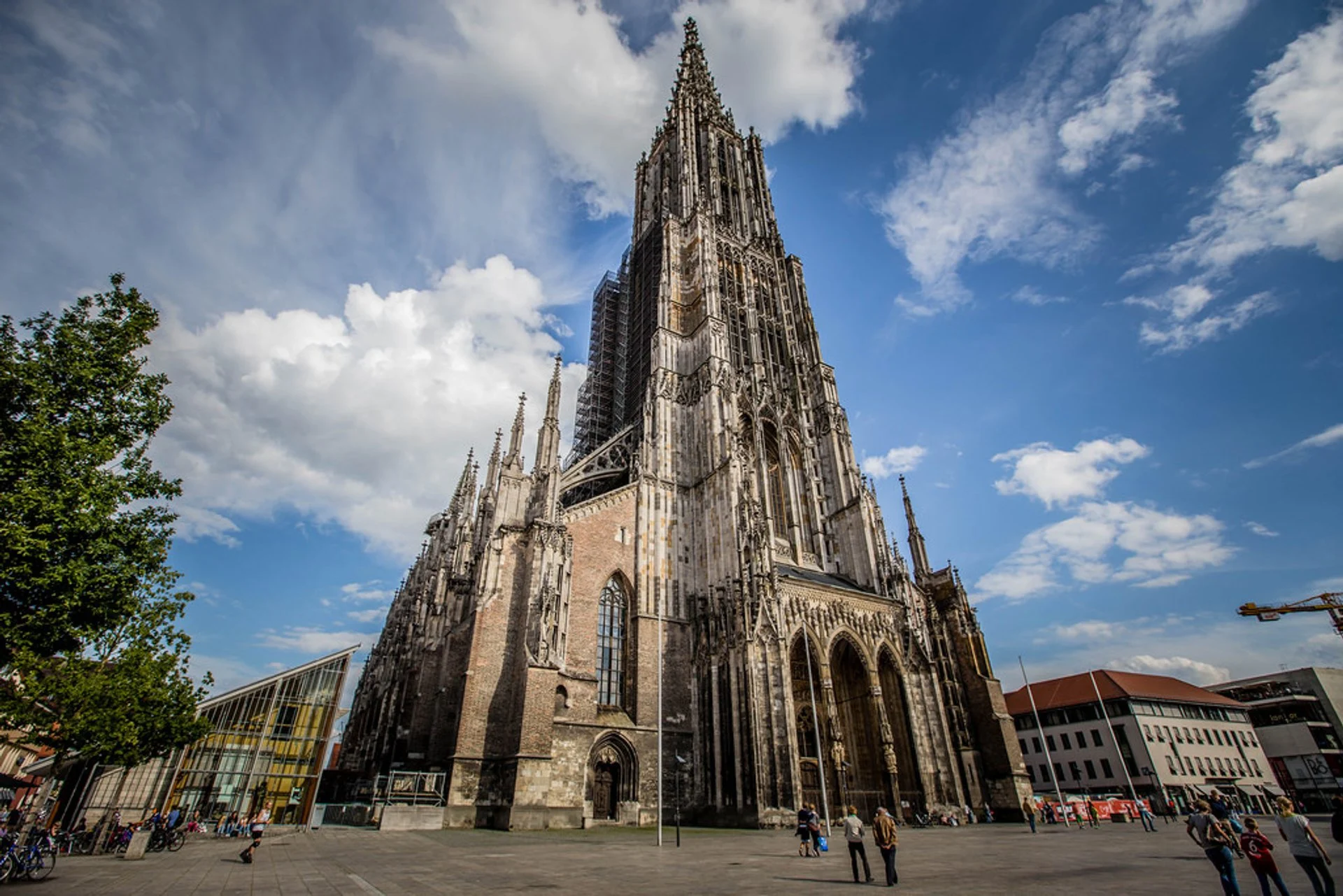 Top 10 Largest Churches In The World Top 10 Largest Churches In The World Churches are one of the oldest parts in the history, and there are many beautiful Catholic churches for you to see around the world. Here ... |
3. Milan Cathedral (Italy)
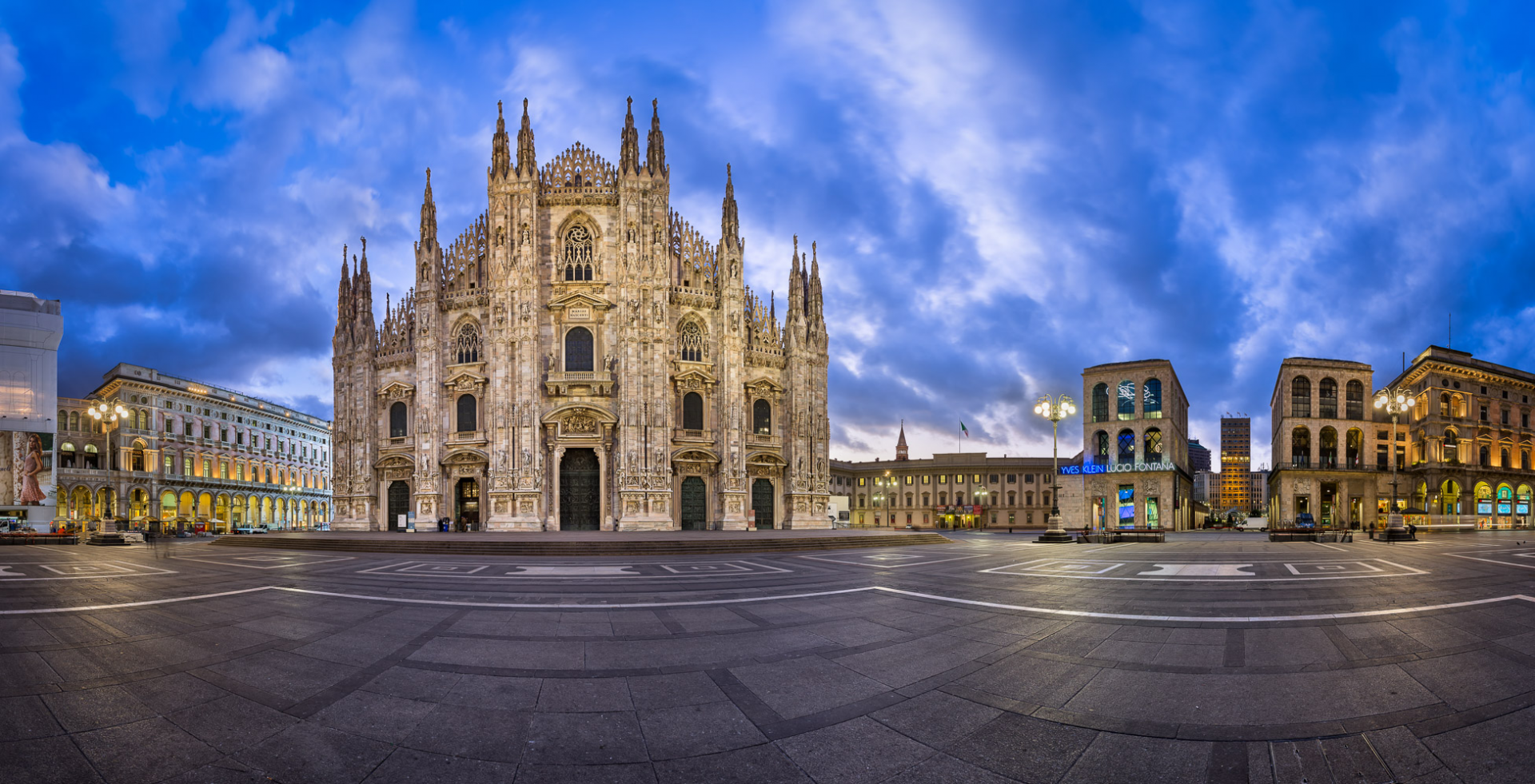 |
| Photo: World for Travel |
The Milan Cathedral, or Metropolitan Cathedral-Basilica of the Nativity of Saint Mary (Italian: Basilica cattedrale metropolitana di Santa Maria Nascente), is the cathedral church of Milan, Lombardy, Italy. Dedicated to the Nativity of St Mary (Santa Maria Nascente), it is the seat of the Archbishop of Milan, currently Archbishop Mario Delpini.
The cathedral took nearly six centuries to complete: construction began in 1386, and the final details were completed in 1965. It is the largest church in Italy—the larger St. Peter's Basilica is in the State of Vatican City, a sovereign state—and the second largest in Europe and the third largest in the world.
2. Seville Cathedral (Spain)
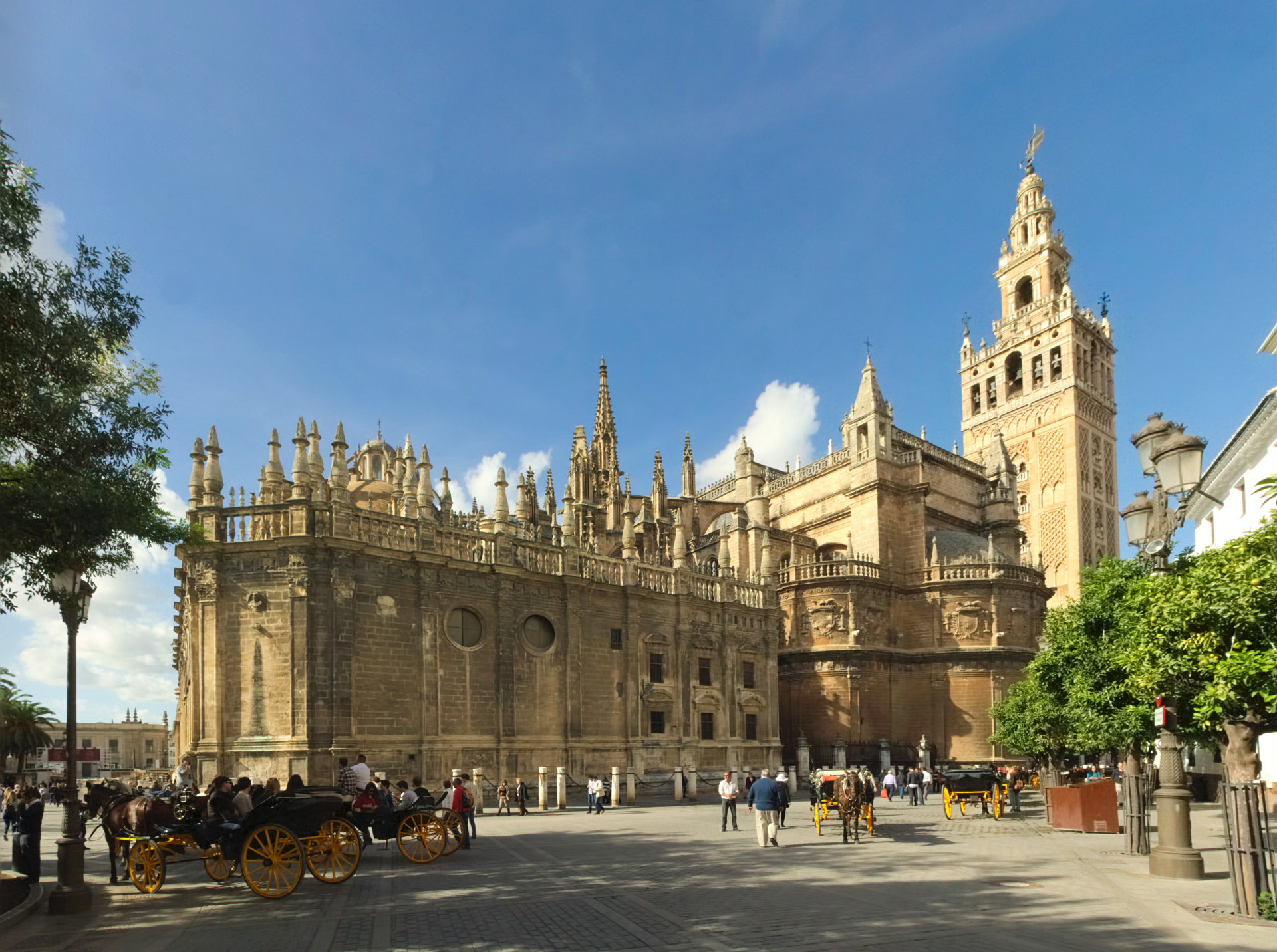 |
| Photo: Wikipedia |
The Cathedral of Saint Mary of the See (Spanish: Catedral de Santa María de la Sede), better known as Seville Cathedral, is a Roman Catholic cathedral in Seville, Andalusia, Spain. It was registered in 1987 by UNESCO as a World Heritage Site, along with the adjoining Alcázar palace complex and the General Archive of the Indies. It is the fourth-largest church in the world (its size remains a matter of debate) as well as the largest Gothic church.
After its completion in the early 16th century, Seville Cathedral supplanted Hagia Sophia as the largest cathedral in the world, a title the Byzantine church had held for a thousand years. The total area occupied by the building is 11,520 square metres (124,000 sq ft). The Gothic section alone has a length of 126 m (413 ft), a width of 76 m (249 ft), and its maximum height in the center of the transept is 42 m (138 ft). The total height of the Giralda tower from the ground to the weather vane is 104.5 m (342 ft 10 in).
Seville Cathedral was the site of the baptism of Infante Juan of Aragon in 1478, only son of the Catholic Monarchs Ferdinand II of Aragon and Isabella I of Castile. Its royal chapel holds the remains of the city's conqueror Ferdinand III of Castile, his son and heir Alfonso the Wise and their descendant king Peter the Just. The funerary monuments for cardinals Juan de Cervantes and Pedro González de Mendoza are located among its chapels. Christopher Columbus and his son Diego are also buried in the cathedral.
1. St. Peter’s Basilica (Vatican City)
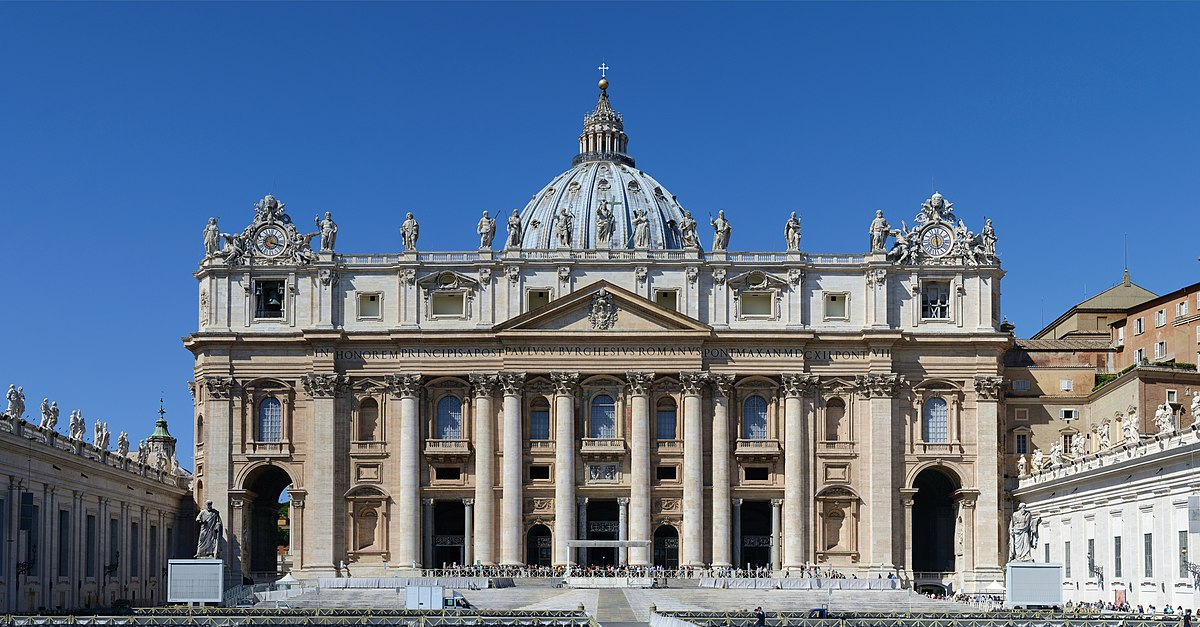 |
| Photo: Wikipedia |
The Papal Basilica of Saint Peter in the Vatican (Italian: Basilica Papale di San Pietro in Vaticano), or simply Saint Peter's Basilica (Latin: Basilica Sancti Petri), is a church built in the Renaissance style located in Vatican City, the papal enclave that is within the city of Rome.
Designed principally by Donato Bramante, Michelangelo, Carlo Maderno and Gian Lorenzo Bernini, St. Peter's is the most renowned work of Renaissance architecture and the largest church in the world by interior measure. While it is neither the mother church of the Catholic Church nor the cathedral of the Diocese of Rome (these equivalent titles being held by the Archbasilica of Saint John Lateran in Rome), St. Peter's is regarded as one of the holiest Catholic shrines. It has been described as "holding a unique position in the Christian world" and as "the greatest of all churches of Christendom".
Catholic tradition holds that the basilica is the burial site of Saint Peter, chief among Jesus's apostles and also the first Bishop of Rome (Pope). Saint Peter's tomb is supposedly directly below the high altar of the basilica or "Altar of the Confession". For this reason, many popes have been interred at St. Peter's since the Early Christian period. A church has stood on this site since the time of the Roman emperor Constantine the Great. Old St. Peter's Basilica dates from the 4th century AD. Construction of the present basilica began on 18 April 1506 and was completed on 18 November 1626.
St. Peter's is famous as a place of pilgrimage and for its liturgical functions. The pope presides at a number of liturgies throughout the year both within the basilica or the adjoining St. Peter's Square; these liturgies draw audiences numbering from 15,000 to over 80,000 people. St. Peter's has many historical associations, with the Early Christian Church, the Papacy, the Protestant Reformation and Catholic Counter-reformation and numerous artists, especially Michelangelo.
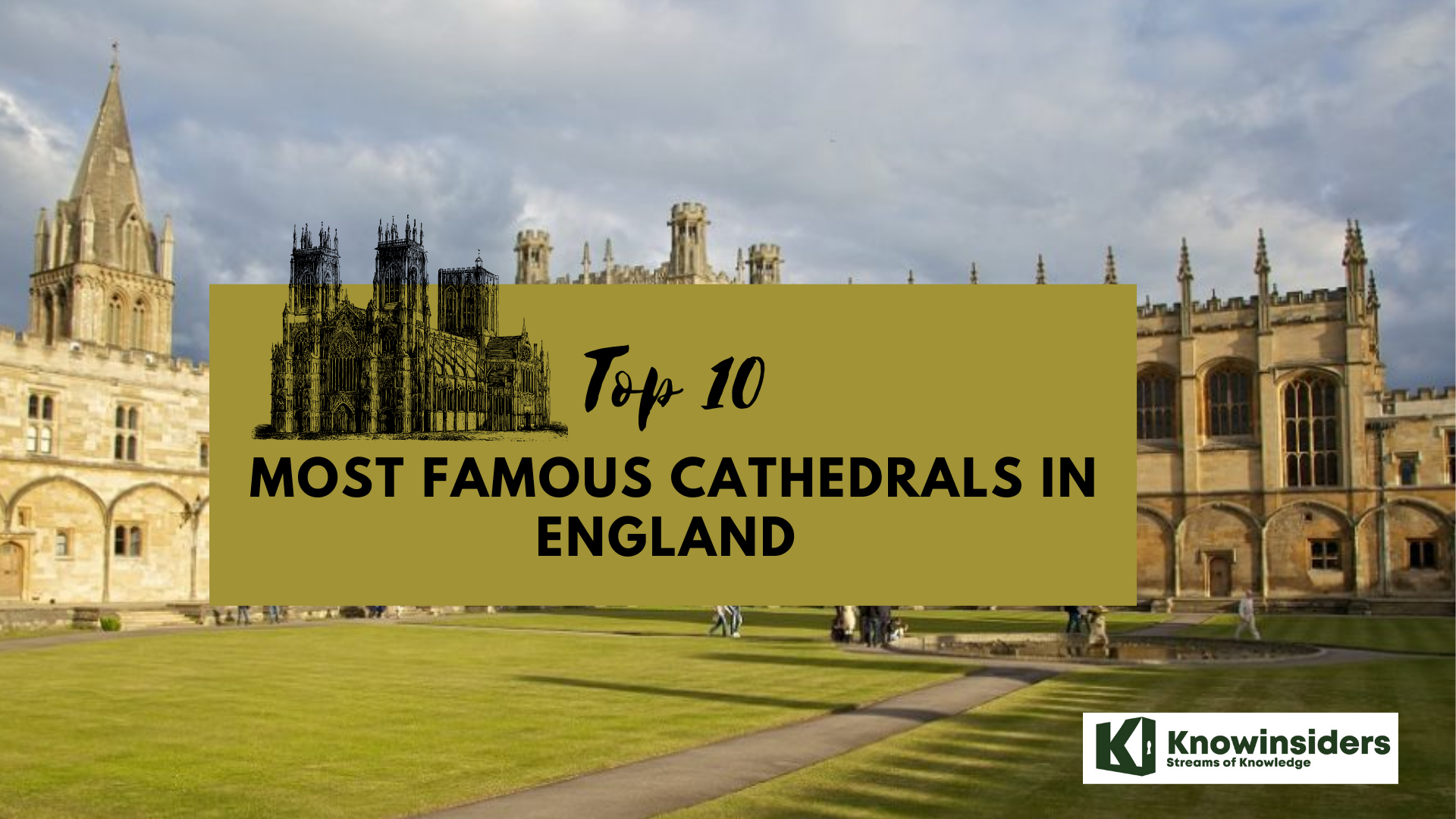 Top 10 Most Famous Cathedrals In England Top 10 Most Famous Cathedrals In England England is the land to many old and historic sites, buildings, museums, churches and cathedrals. Here is top 10 most famous cathedrals to visit when ... |
 Top 10 Largest Churches In The World Top 10 Largest Churches In The World Churches are one of the oldest parts in the history, and there are many beautiful Catholic churches for you to see around the world. Here ... |
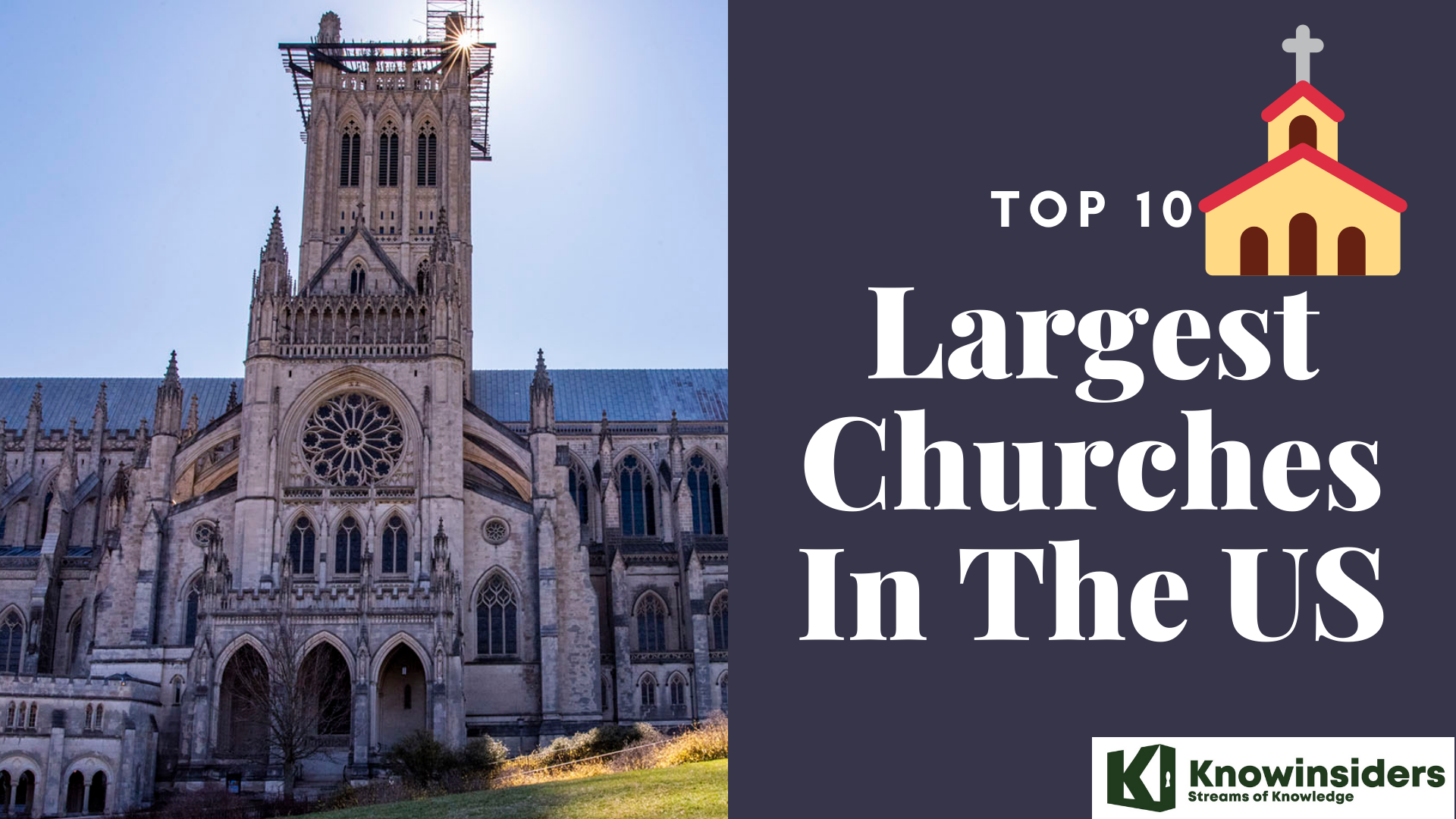 Top 10 Largest Churches In The US Top 10 Largest Churches In The US In recent years, churches have been more than just a simple place gathering for religion, and the community has expanded greatly, along with the churches. ... |
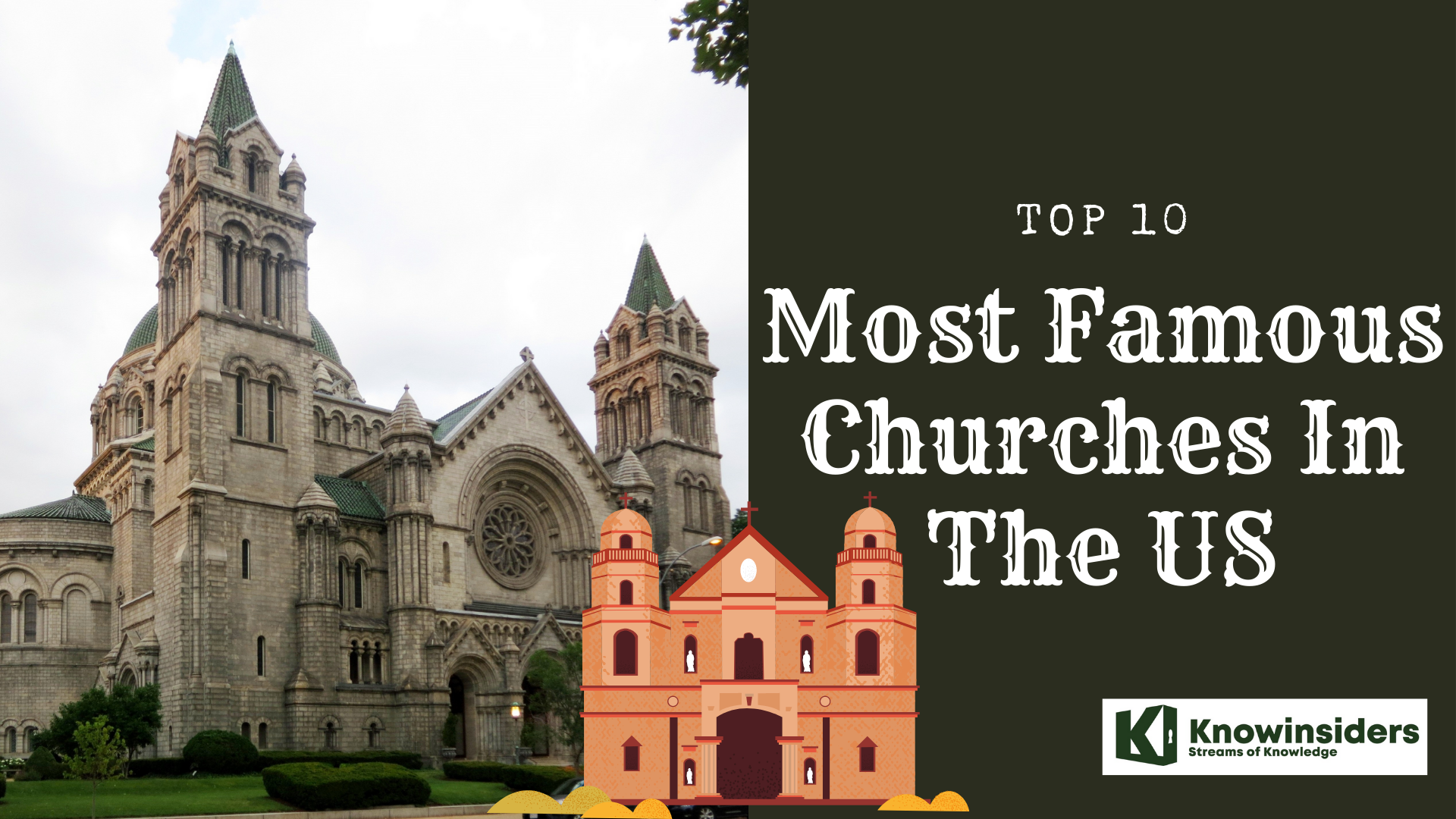 Top 10 Most Famous Churches in America Top 10 Most Famous Churches in America Church is where you come to pray, explore, arrange the weddings or learn more about Catholic history. Let's take a look at 10 most famous ... |


























